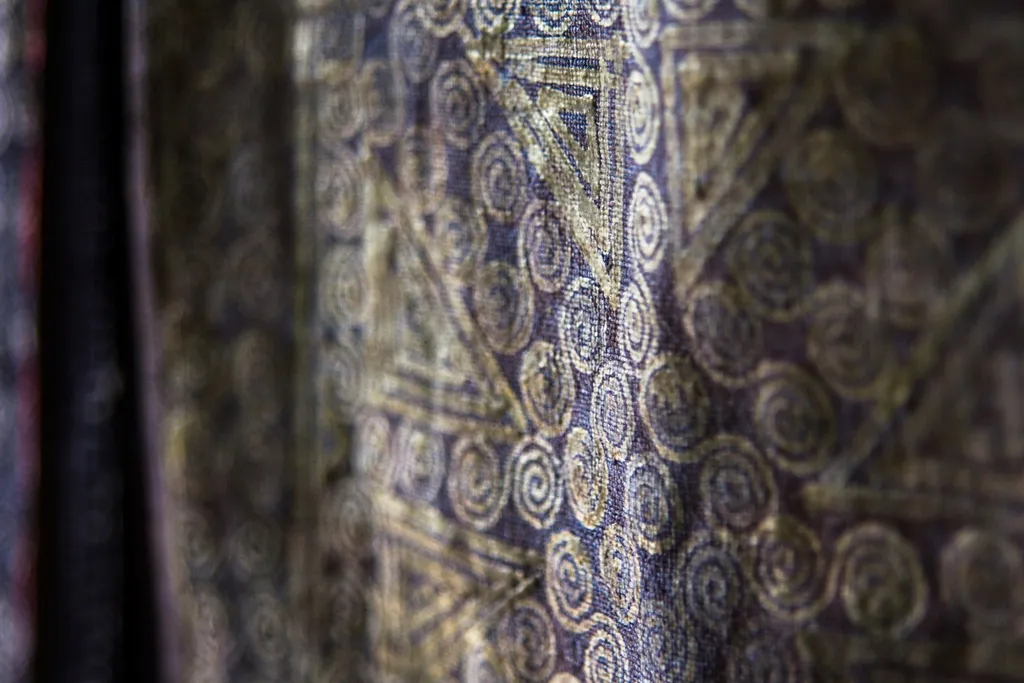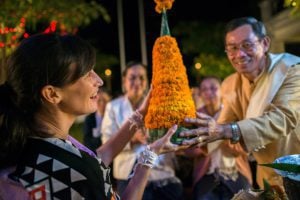The beautiful art of batik – using wax and dye to create patterns on cloth – has been around for centuries. More than 2,400 years ago, the Egyptians used a form of batik to wrap their mummies, and the practice soon spread to China, India, Japan and Indonesia. Batik is also practiced as far away as Africa, although various starches may be substituted for beeswax.
In Vietnam, the H’mong, one of the country’s 54 ethnic groups, practice this age-old art and we set out to the Muong Hoa Valley, just outside of Sapa, to learn from a batik master.

Because Sapa’s climate and soil only support one rice crop per year, the women have months where looking after the home and children are their main duties while the men are off tending to fields, animals or doing manual labor. Walking through the H’mong villages, you see women and girls sitting everywhere – sewing, embroidering and hand-dyeing spectacularly colorful outfits. It’s refreshing to note that these intricate garments aren’t for tourists – the H’mong women actually wear them quite often – when going to market, going into town, and sometimes just to visit neighbors.
Our batik master is named Dee and she welcomes us to her small but tidy home. She speaks very little English, but a ready and full-bodied smile transcends all language barriers and we’re soon communicating through bits of English, Vietnamese and lots of gestures.

Batik starts out with some kind of cloth. The Vietnamese H’mong prefer hemp, and a complicated-looking handloom testifies to their weaving skills.

The hemp fibers are straw-like and it’s hard to believe that they can be spun into such strong, durable cloth with a linen-like feel.

The art of batik creates patterns using a wax-resist method. Dee puts on a pot of beeswax to melt over hot coals. The beeswax is colored with indigo paste to make it easier to see against the off-white hemp fabric.

A basket of tools lies nearby – filled with pen-like instruments made of bamboo and tipped with metal. There are metal stamps as well in all types of shapes and patterns taken from nature and from everyday motifs, a traditional way of documenting everyday H’mong life.

Dee chooses a blunt tool and begins to make a crease in the fabric which will later be a border. She hands us the tool and we line up the fabric with a groove in a wooden board and get to work. Simply making straight lines is hard work!

We then dip the tool into the beeswax and draw a border for our batik. Like using an old-fashioned quill pen, the tool must be dipped in wax often to create smooth, consistent lines.

We then use the stamps to create patterns in the cloth. There are squiggly circles…

… and dragonflies…

And we even attempt to draw freehand.

The process is engrossing and takes lots of concentration to place the designs just so. Luckily, Dee is very patient and forgiving!

When our piece of hemp is filled with designs, it’s time to dye.

We pause to admire the “real” batik made by these talented H’mong women, and recognize the skill and attention to detail involved in these stunning creations as we compare the finished product on the left with the wax design on the right. In the villages, we see batik fabric used for clothing (skirts and blouses) as well as blankets and wall hangings. Every piece of batik is unique, as the artisans follow no guide or pattern other than their own creativity.

Dee shows us some non-descript plants growing in the front of her home.

The leaves look almost like basil, but when crushed, release a purplish liquid.

All around the villages, we see indigo-dyed cloth drying in the wind. For darker purple, the cloth must be dyed and dried repeatedly.

Our small batik, though, needs only a few dips in the indigo. Care is taken not to let the wax melt as it dries in the sun. Once the desired color is achieved, the cloth is finally boiled to remove the wax, leaving behind the patterns in the original hemp color.

We end with a hug for our friendly batik teacher and she promises to bring our finished product to our nearby Victoria Homestay in the morning. The class has been enlightening, seeing how much work goes into the beautiful costumes of the H’mong women. With the advent of technology, the art of weaving hemp and creating batik is slowly being replaced by machine-woven fabric and the factory-printing of designs. So we’re also thankful that we had a small hand in promoting and preserving the timeless art of batik.
The H’mong batik class can be combined with a stay at the wonderfully rustic Victoria Homestay experience in the gorgeous Muong Hoa Valley, exclusively for guests of Victoria Sapa Resort & Spa and its partners. The homestay can be booked in combination with a scenic trek, herbal footbath and batik class for a full, unforgettable experience. Email [email protected] or visit the website for more information.










